DiscoveriesNew types of data bring new insights ...
Lunar cycles
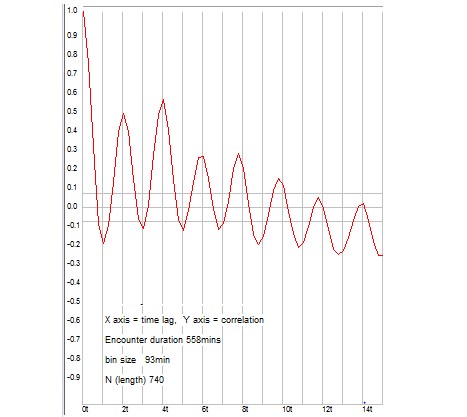
In shallow water porpoises commonly show both tidal and daily cycles of activity and may switch between the two in different phases of the lunar cycle, i.e. the spring/neap tidal cycle.
The auto-correlation of dolphin detections is shown below. The X-axis units are tidal cycles. At this site tidal patterns strongly determine the presence/absence cycle.
Auto- and cross-correlation are available within the FPOD app.
Beaked whales
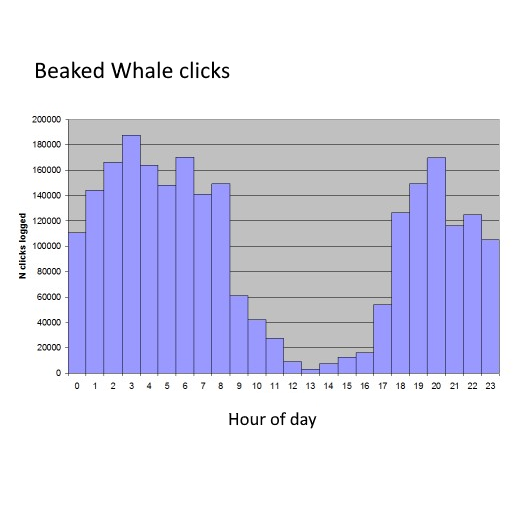
In deep water very strong diel patterns can be seen in the activity of beaked whales.
Diel patterns of click numbers, click rates, click frequencies etc are directly available in the FPOD app
Seasonal patterns
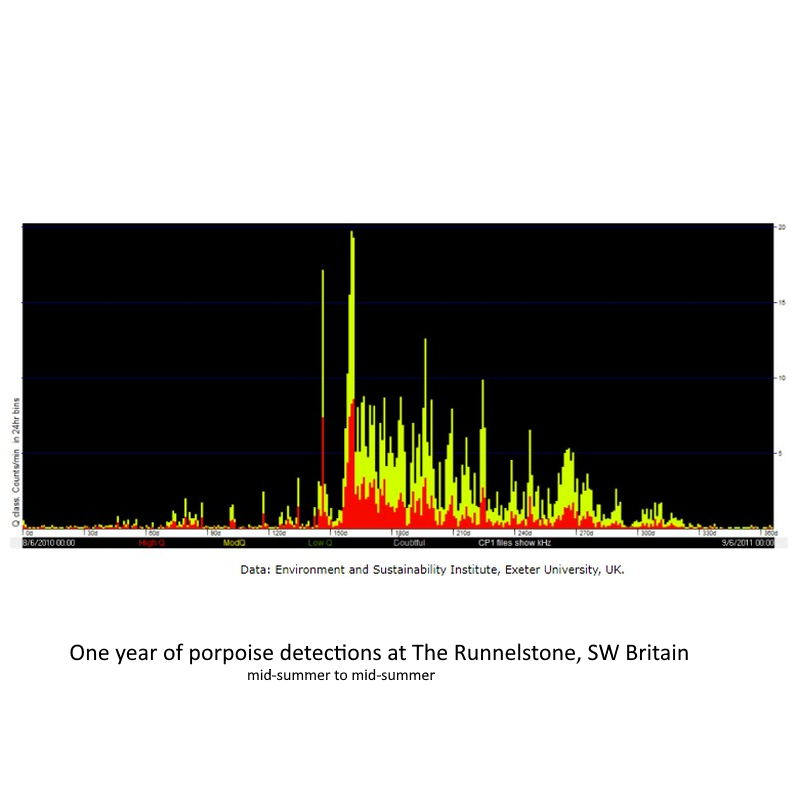
Seasonal patterns in some locations are so strong that it is clear that visual assessment of use of such sites could be very misleading unless it was based on multiple surveys through the whole year. This image shows seasonal presence of porpoises at a high density site in southwest Britain.
In months when visual surveys are practical, porpoises are few, but in midwinter they are numerous.
Very low porpoise densities can be monitored acoustically
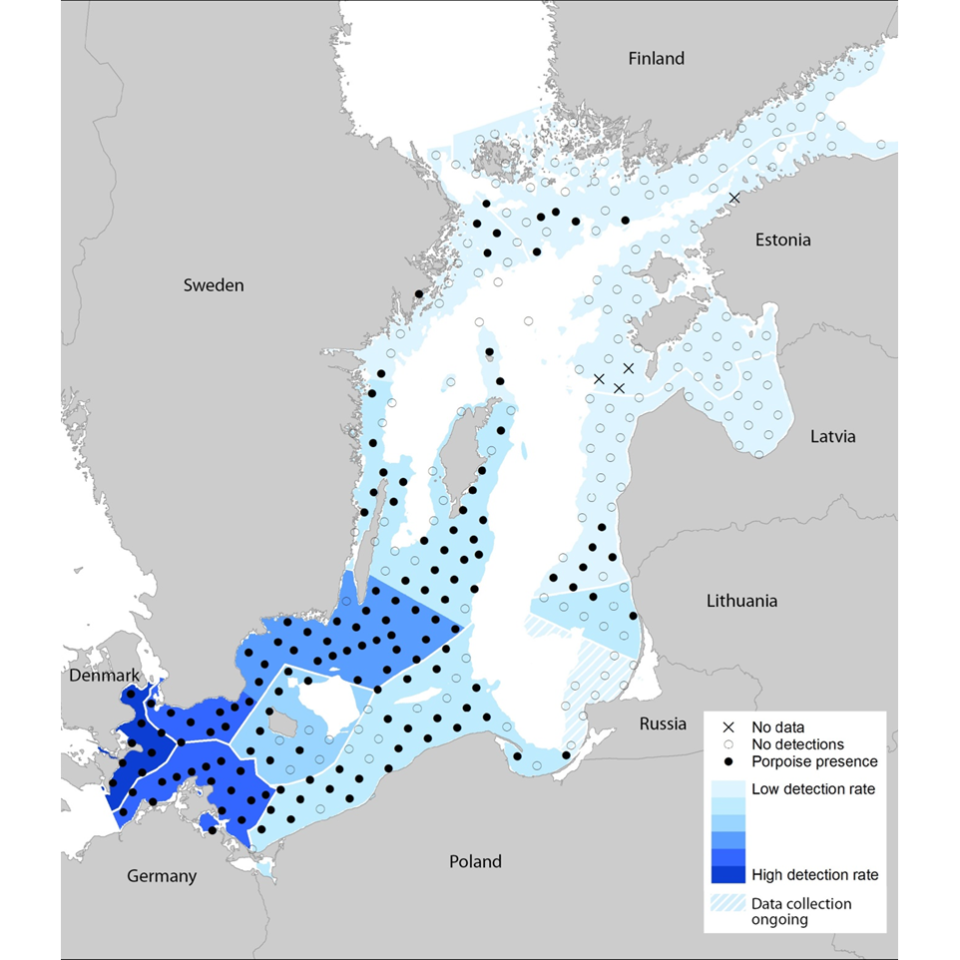
The Baltic Sea Harbour Porpoise is at such low levels that estimation of either population or population trend by visual methods would be excessively expensive.
In the SAMBAH project static passive acoustic monitoring accumulated 400 years of data over 2 years and showed seasonal movements and distributions that were so clear that a large MCZ has been established for their conservation.
The Boto has shifted its social communication to clicks
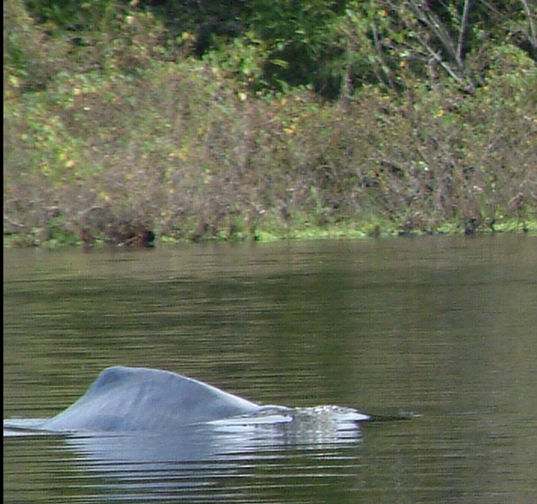
The F-POD has revealed a pattern of very high click rate social calls mediated by highly directional click trains instead of the omni-directional whistles used by marine dolphins.
The complexity of these rate profiles and their diversity is extraordinary.
Sediment transport noise can affect cetacean distribution
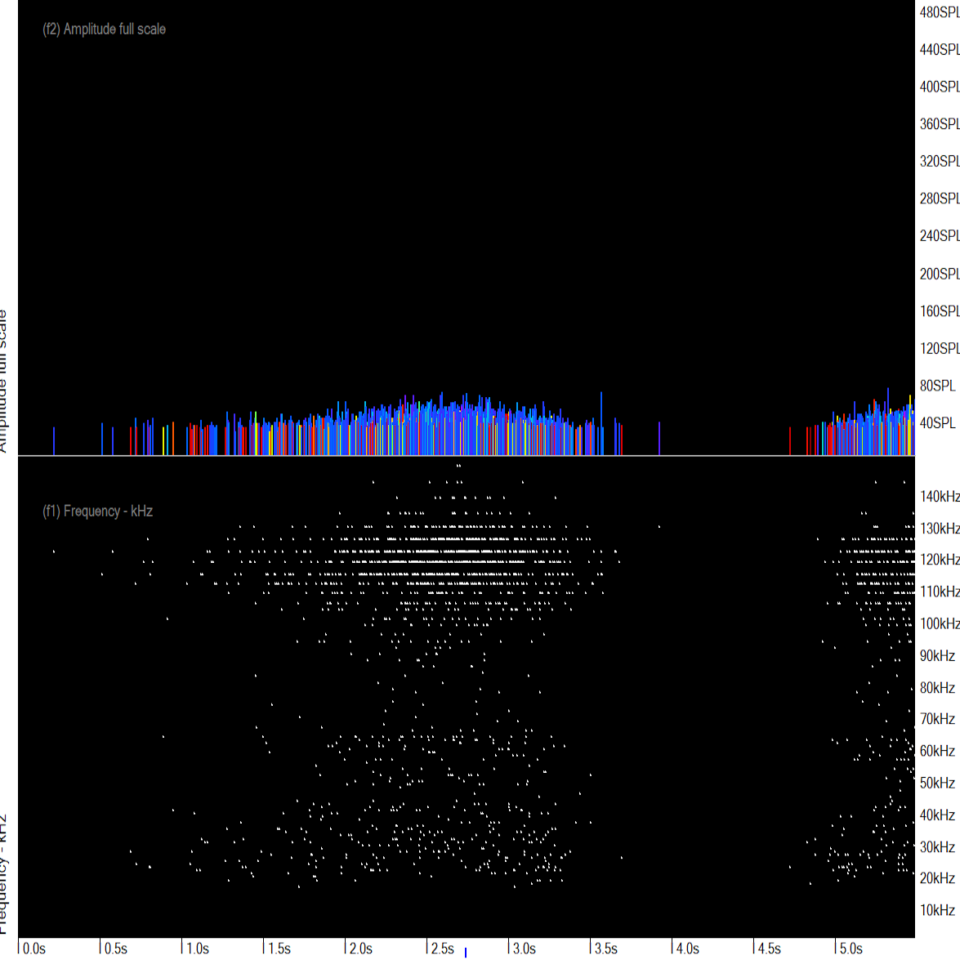
Sand in suspension is very noisy! Fine sand can generate high levels of background noise in the ultrasonic range of cetaceans. This image shows fine sand - approx 0.25mm diameter lifted by waves.
Such almost continuous sources can 'jam' cetacean sonar and cause them to leave a noisy area, but little targeted investigation of this has been done so far.